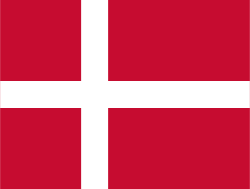Søg i RSS nyheder
Netfugl live (RSS)
My frustration at the lack of birds has been rather obvious of late but I had forgot about the fjord off Fornebu which last winter held exceptional numbers of seaduck due, apparently, to a vast hatch of young mussels which they fed on. On Thursday after an uneventful walk around Fornebu we then checked out the sea and whilst the numbers of Common Eider, Velvet and Common Scoter were back to normal levels (20-30 of each species) we did have 7 Long-tailed Duck which is a very good count here and best of all Elvis, the long staying resident King Eider put in a rare appearance from land. Also, a part of the fjord, Frognerkilen is an urban location best known for being able to feed the ducks and swans but there is also a small reedbed where I plan that one fine day I will add Bearded Tit to my Oslo list. A Kingfisher has recently been reported from here and after three attempts I also eventually saw it. Chatting to a man with a very long lens though revealed that he had been watching it for a couple of months and has managed to keep it quiet and not post (yet) any pictures on his SO ME so good on him and the bird! One of my unsuccessful visits was enlivened though with a Jack Snipe which I think has been pushed out the reedbed due to a very high tide and was stood upon some floating reedstems. The weather forecast shows no return to wintery weather in the foreseeable future and I am sure that Maridalsvannet will not freeze over until January at the earliest. And who knows maybe we are in for such a mild winter that it won’t freeze over at all which will be a first (though I think that I remember one previous winter without ice before January). Common Eider (ærfugl) and the noticeably smaller King Eider (praktærfugl) my camera was really playing up but you can glimpse the left half of a Jack Snipe (kvartbekkasin) here... ... and the right half here Kingfisher (isfugl) the Marsh Tits (løvmeis) are still showing well in Maridalen
13. dec. 2025 kl. 15:02
Community engagement was at the heart of California’s Audubon Conservation Ranching (ACR) work in 2025. From chefs and ranchers to restoration leaders, conservationists, and curious community...
Many of the 30 Tribes in the Colorado River Basin have articulated the value of a river as a living entity, and that U.S. federal management guidelines must account for the health of the river. Most...
Join us as we marvel at these remarkable birds and their incredible journeys, all while enjoying the natural beauty of our local community and set against the backdrop of the stunning Rhodes Bayou in...
Trækket på Odden: Dagen begyndte fint med et ret flot træk af lommer og endte i regn med stort set ingen fugle i havtrækket. Vi var de to faste tæller i godt selskab med to andre frivillige med tilknytning...
12. dec. 2025 kl. 23:29
Randall Fleming is the go-to guy at UrbanScapes Native Plant Nursery, according to Dennis Riordan, who helped found the New Haven-based nursery through Menunkatuck Audubon Society. “Randall lives...
The Yuma Ridgway's Rail (Rallus obsoletus yumanensis), a subspecies of the Ridgway's Rail, is a brown marsh bird about the size of a chicken. It is typically secretive and rarely seen, most usually...
Tirsdag den 27. januar kl. 19.00 i Aulum Fritidscenter, Markedspladsen 10, 7490 Aulum Jævnfør DOF-Vestjyllands vedtægter, skal der afholdes ordinær generalforsamling...
Hans Ulrik Skotte Møller.31.03.1951-12.10.2025.Hans Ulrik døde den 12. oktober i år efter lang tids sygdom og alligevel pludseligt. Vi har dermed mistet en både...
12. dec. 2025 kl. 01:00

Tenna og Herøy i Nordland er et fugleparadis av internasjonal betydning, men planene om bro til Brasøy truer dette unike landskapet. BirdLife Norge mener prosjektet må stansen før irreversible naturinngrep gjennomføres. Broprosjektet står på et ufullstendig og svakt faglig grunnlag, og kan ikke brukes som beslutningsgrunnlag for å vurdere irreversible naturinngrep.
Trækket på Odden: Fredag blev mest af alt en hyggelig dag på Odden for de to fra fuglestationen i godt selskab med folk, der har en lang tilknytning til fuglestationen, nemlig Gert Juul Jeppesen og...
When nesting Tricolored Blackbirds choose a triticale field on one of the San Joaquin Valley’s working dairy farms, Audubon shows up. And this year, when one adventurous flock broke their usual...
Af Kristina Banke Svendsen 9 fugleentusiaster trodsede vejret, torsdag den 4. december. Flot, når man tager vejret i betragtning. Regn i forskel lige styrker og...
11. dec. 2025 kl. 03:36
Audubon’s Corkscrew Swamp Sanctuary in Southwest Florida was awarded $100,000 as part of the Collier Community Foundation’s 2025 Celebration of Philanthropy on October 17. One of four local...
11. dec. 2025 kl. 03:33
The Office of Agriculture Water Policy has allocated $25 million for regional water quality improvement projects. Supported by Commissioner Wilton Simpson, the Agricultural Regional Projects...
11. dec. 2025 kl. 03:27
Critical Milestone in Everglades Agricultural Area Reservoir Timeline Audubon Florida joined the U.S. Army Corps of Engineers and restoration partners in late September to celebrate the signing...
Endemic to marl prairie habitats in the southern Everglades, the Cape Sable Seaside Sparrow is sensitive to subtle shifts in water levels: Nesting success demands dry enough ground during the...
11. dec. 2025 kl. 03:11
Audubon has been advocating with the Central Florida Water Initiative (CFWI) for stronger safeguards for aquifers, wetlands, and natural systems, while sounding the alarm that this effort must do...
11. dec. 2025 kl. 03:02
Several years ago, developers proposed a massive South Dade Logistics and Technology District that would have required an expansion of Miami-Dade County’s Urban Development Boundary (UDB). This...
Thanks to a new agreement between the State of Florida and the U.S. Army Corps of Engineers (the Corps), construction of the Everglades Agricultural Area (EAA) Reservoir is slated to be complete in...
Leggy and sharp-eyed, Common Grackles (along with their larger, showier relatives, Great-tailed Grackles and Boat-tailed Grackles) are often mistaken for crows—until they open their bills. Once you...
11. dec. 2025 kl. 01:40
It was a cool, overcast spring morning in Grays Harbor, Washington. Volunteer community scientists gathered to do a spring roosting count of California Brown Pelicans, a subspecies of the Brown...
11. dec. 2025 kl. 01:00

En lørdag kveld i desember lyste fjorden i Kvænangen opp av kraftige lyskastere fra fiskeflåten som hentet inn årets siste sildekvoter. Dagen etter lå strandlinja ved Burfjord full av døde gråmåker – en truet art i tilbakegang. BirdLife Norge krever umiddelbar stans av sildefisket med not, og vi ønsker deg med på kampen!
Trækket på Odden: Undskyld, at vi ikke har fået skrevet blog/dagbog tirsdag og onsdag. Det skyldes ganske enkelt, at der ikke var tid til det på grund af andre aktiviteter i DOF/BirdLife Danmark. Vi...
10. dec. 2025 kl. 23:37
Each summer, round and puffy Piping Plover chicks can be found scurrying up and down the sandy beaches of the Great Lakes region, delighting many birders, conservationists and volunteers who can...




